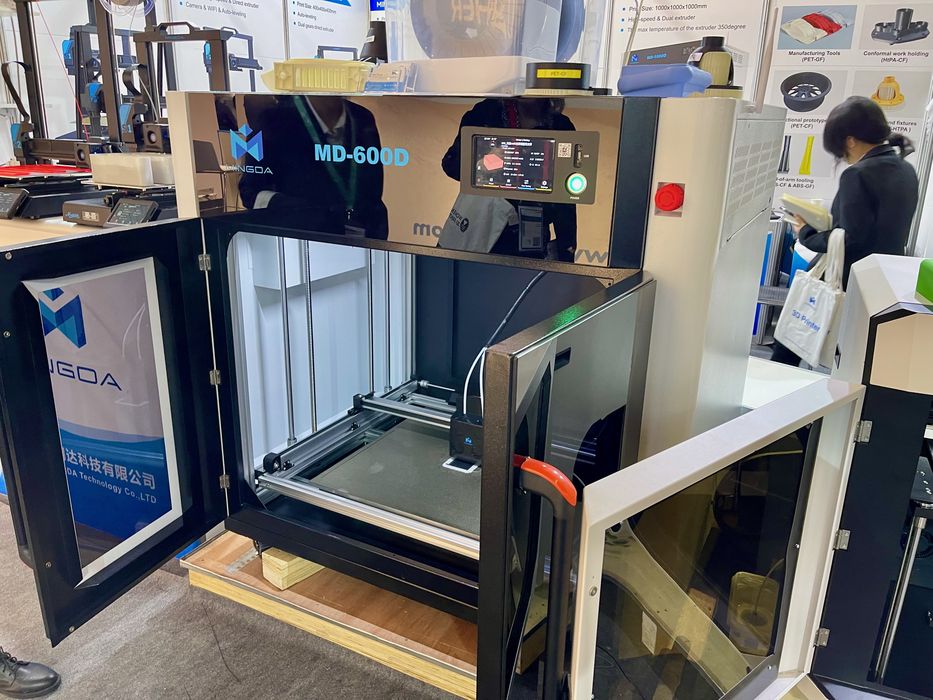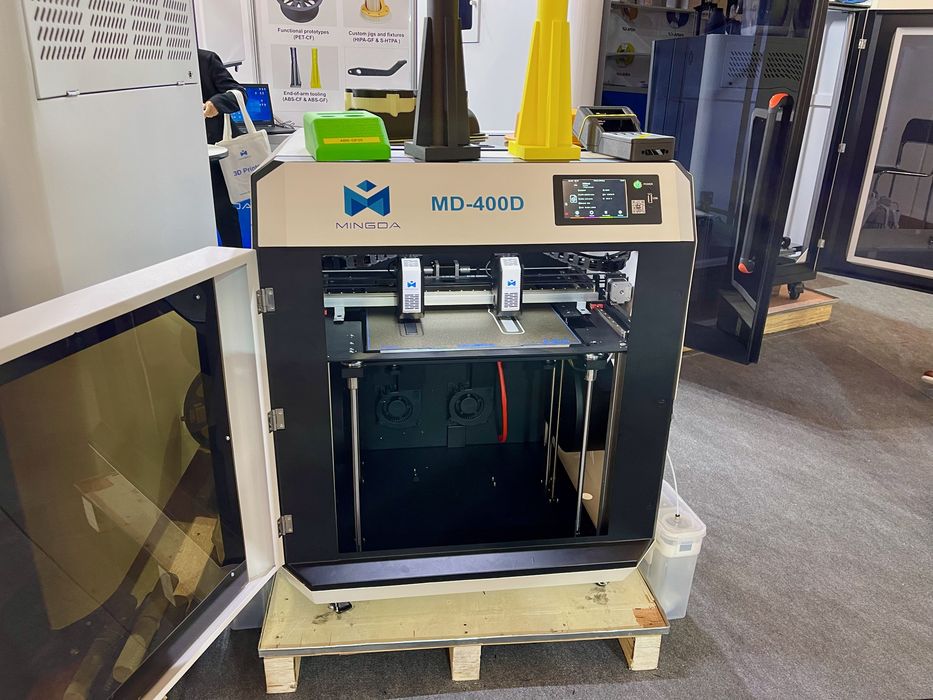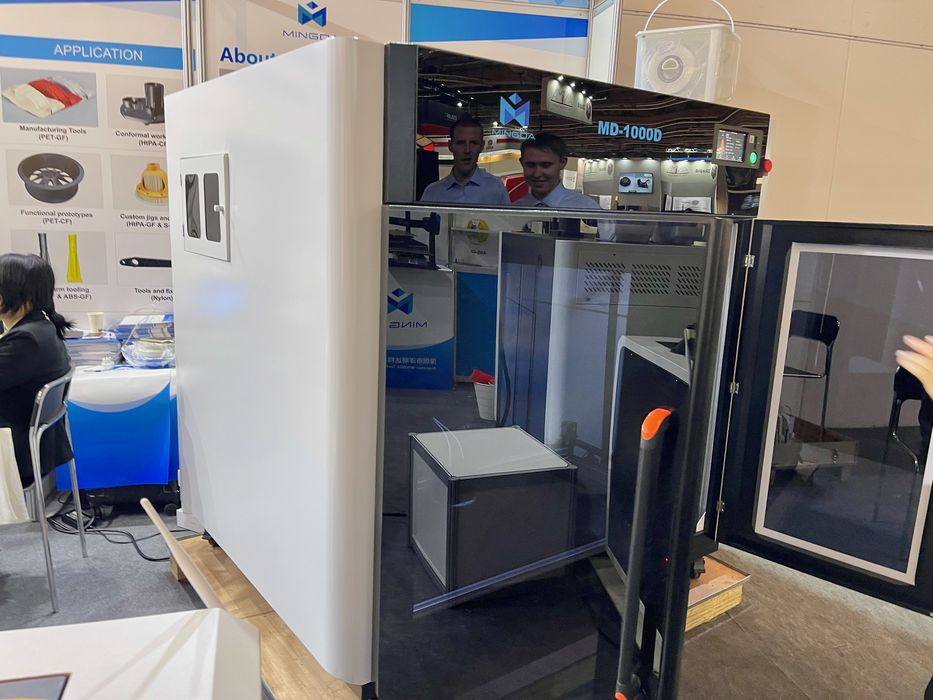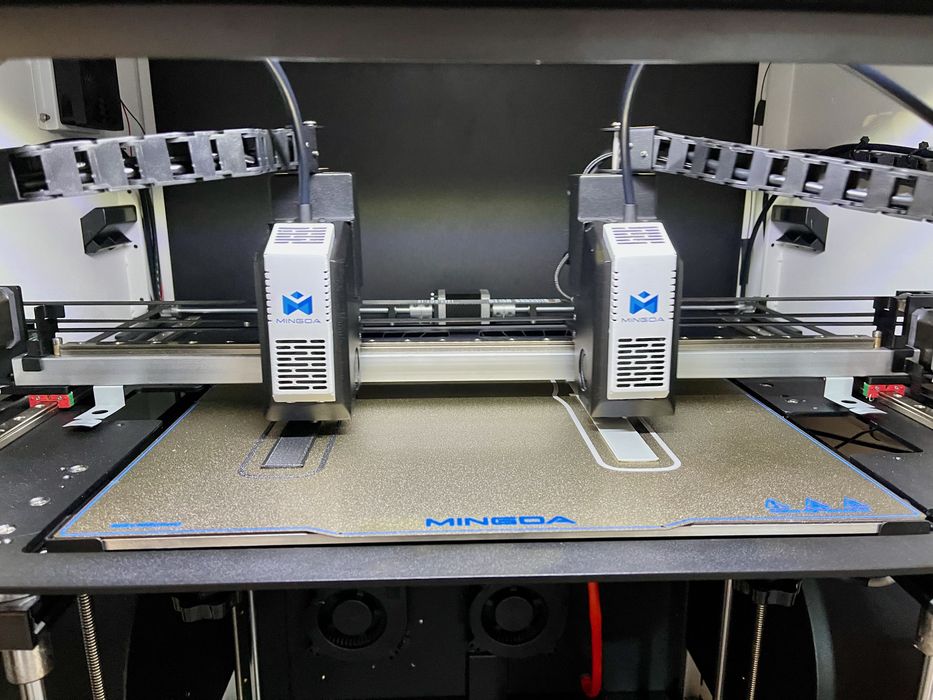
Could Mingda be making a switch towards larger, professional 3D printers?
The Chinese company is well known for their line of desktop FFF 3D printers, and in particular their Magician series. Currently, the company offers six different models of the Magician, led by the current flagship model, the Magician X2. We reviewed the Magician X device a year and a half ago.
While the company continues to produce these desktop open-gantry 3D printers, they also produce much larger 3D printers for professional and industrial use.
At a recent conference we were able to check out several of the larger models presented by the company.
At top you can see the huge MD-600D 3D printer. This is an optionally dual extrusion device that has a massive 600 x 600 x 600 mm build volume. The device is also able to print at up to 300mm/s, with an enormous flow rate of up to 40 cubic mm/s. That flow rate should easily keep up with those speeds, and probably more. This would be one of the few larger format 3D printers that can print at high speeds.

In addition to the MD-600D, Mingda also provides the smaller MD-400D, which offers a build volume of, you guessed it, 400 x 400 x 400 mm. This device also offers dual extrusion at the same high speeds. Both machines have hot ends that can hit 350C, making them suitable for a variety of engineering materials.

Is there a bigger model? Of course there is, and it’s called the MD-1000D, with the predictable build volume. Again, this enormous machine includes the same features as the smaller devices, but with a much larger build volume. The speedy printing will be quite important for the large builds that will be done on this machine.
Both the MD-600D and MD-1000D have Pro versions that include a number of convenience features to simplify operations. They can use either a “hot” or “colder” nozzle, increasing the range of possible materials. There’s also storage systems for filaments, and a unique front-rear door system for extra access.

The dual extrusion system offered on all these devices can operate in four different modes:
- Duplicate: where a second copy is printed in the same job
- Mirror: where a “mirrored” copy is printed in the same job
- Support: where the second extruder is used to deliver soluble support material
- Color: where the second extruder delivers a second color in the same job
There’s two sides to Mingda: desktop for consumers and professional equipment for industry. In the West we’ve mainly seen Mingda only in desktop form, but they have considerable maturity in the industrial market overseas. By showing this equipment to the West during our visit with them, it suggests they want to emphasize the industrial line.
That does make sense: the desktop and professional markets are being severely disrupted by new entrants, and I fear some desktop 3D printer manufacturers may fail. They may disappear unless they can quickly move into the industrial market. Here, however, Mingda is already well established in that space, ready for competition.
Via Mingda (Industrial) and Mingda (Desktop)
